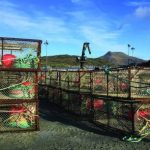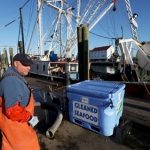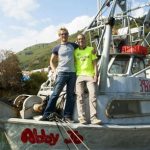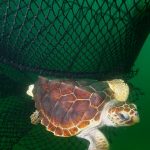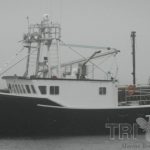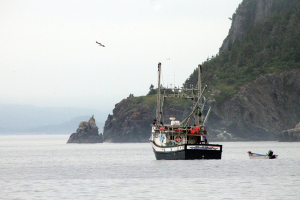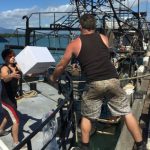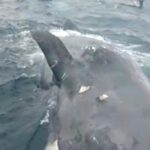Tag Archives: St. John’s
Free fish and smiley faces won’t reverse Ottawa decision to unleash draggers on northern cod (although blockading St. John’s harbour would)
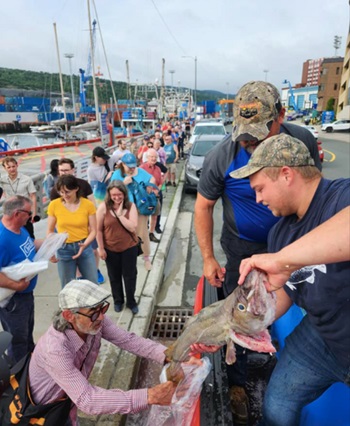 The FFAW regularly goes through protest motions, but its resolve to stand up for inshore boats is forever suspect when the union is conflicted by also representing offshore draggers, and onshore plants — and collects a paycheque from the feds. Now that Ottawa has opened the door to offshore dragging the inshore wants in on it too. Some Labrador (2J) harvesters have asked DFO to be allowed to drag for cod this year, and some 3K (northeast coast) and 3L (east coast) harvesters are right behind them with the same request. The union’s resolve against dragging for northern cod is sure to weaken. Exchanging cod for signatures won’t cut it. Blockading St. John’s harbour might be a bit extreme, but there should be a sweet spot somewhere the middle. Harvesters themselves must take a stand, like they did last spring with the snow crab price on the steps of Confederation Building. Now is the time for John Efford to rise again. more, >>CLICK TO READ<< 10:35
The FFAW regularly goes through protest motions, but its resolve to stand up for inshore boats is forever suspect when the union is conflicted by also representing offshore draggers, and onshore plants — and collects a paycheque from the feds. Now that Ottawa has opened the door to offshore dragging the inshore wants in on it too. Some Labrador (2J) harvesters have asked DFO to be allowed to drag for cod this year, and some 3K (northeast coast) and 3L (east coast) harvesters are right behind them with the same request. The union’s resolve against dragging for northern cod is sure to weaken. Exchanging cod for signatures won’t cut it. Blockading St. John’s harbour might be a bit extreme, but there should be a sweet spot somewhere the middle. Harvesters themselves must take a stand, like they did last spring with the snow crab price on the steps of Confederation Building. Now is the time for John Efford to rise again. more, >>CLICK TO READ<< 10:35
YEAH!!! Newfoundland fish harvesters crash news conference to demand reinstating of cod moratorium
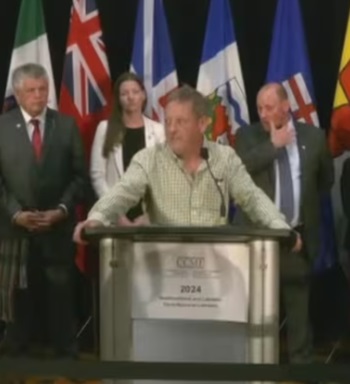 Fish harvesters in Newfoundland crashed the podium at a meeting of Canada’s environment ministers in St. John’s on Wednesday, demanding a meeting with Prime Minister Justin Trudeau over the federal government’s decision to reopen the commercial cod fishery in Newfoundland and Labrador. Moments before the start of the news conference, which was to detail two days of meetings of the Canadian Council of Environment Ministers, Newfoundland and Labrador Environment Minister Bernard Davis was interrupted by a loud siren. Glen Winslow, a St. John’s fish harvester, then walked up to meet Davis at the podium from a group of around 15 protesters. “Sorry we got to do this, my buddy, but this is too important to Newfoundland and Labrador,” Winslow said to Davis over the news conference’s microphone while the other ministers watched on. more, >>CLICK TO READ<< 17:43
Fish harvesters in Newfoundland crashed the podium at a meeting of Canada’s environment ministers in St. John’s on Wednesday, demanding a meeting with Prime Minister Justin Trudeau over the federal government’s decision to reopen the commercial cod fishery in Newfoundland and Labrador. Moments before the start of the news conference, which was to detail two days of meetings of the Canadian Council of Environment Ministers, Newfoundland and Labrador Environment Minister Bernard Davis was interrupted by a loud siren. Glen Winslow, a St. John’s fish harvester, then walked up to meet Davis at the podium from a group of around 15 protesters. “Sorry we got to do this, my buddy, but this is too important to Newfoundland and Labrador,” Winslow said to Davis over the news conference’s microphone while the other ministers watched on. more, >>CLICK TO READ<< 17:43
FFAW Calls for Drastic Changes to Provincial Processing Licensing Amid Harvester Protests in St. John’s
 ST. JOHN’S, NL – FFAW-Unifor is calling on the provincial government to listen to protesting fish harvesters by lifting all processing caps in the province, grant new processing licenses, and remove restrictions on outside buyers. “Fish harvesters in our province have been disadvantaged long enough. The situation has gotten so severe in recent years that a very large number are now facing imminent bankruptcy due to the cartel-like environment processing companies enjoy here in Newfoundland and Labrador,” explains Greg Pretty, FFAW-Unifor. “When fish harvesters cannot find a buyer for their catch – we have a serious problem. This province cannot have a thriving fishery if fish harvesters are not succeeding, and the current wall of opposition they face makes success unattainable,” Pretty says. more, >>click to read<< 15:01
ST. JOHN’S, NL – FFAW-Unifor is calling on the provincial government to listen to protesting fish harvesters by lifting all processing caps in the province, grant new processing licenses, and remove restrictions on outside buyers. “Fish harvesters in our province have been disadvantaged long enough. The situation has gotten so severe in recent years that a very large number are now facing imminent bankruptcy due to the cartel-like environment processing companies enjoy here in Newfoundland and Labrador,” explains Greg Pretty, FFAW-Unifor. “When fish harvesters cannot find a buyer for their catch – we have a serious problem. This province cannot have a thriving fishery if fish harvesters are not succeeding, and the current wall of opposition they face makes success unattainable,” Pretty says. more, >>click to read<< 15:01
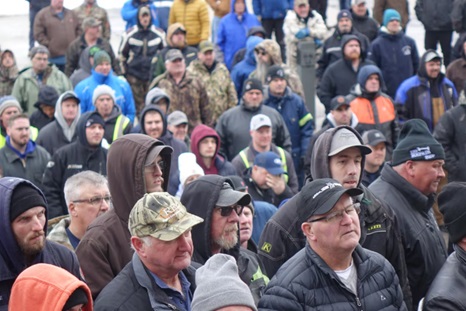
Tensions run high as crab harvesters call on N.L. government to introduce outside buyers
More than 150 fishermen led an anger-fueled protest on the steps of Confederation Building on Tuesday, calling on the Newfoundland and Labrador government to free up the fishery and allow harvesters to sell their product to outside buyers. Under the current rules, harvesters are only allowed to sell their catch to processors in the province at a price agreed upon by the Fish, Food & Allied Workers union and the Association of Seafood Producers. Harvesters are calling on the province to give them more control over where they can sell their catch and how much they can sell it for. “The plants are telling us when to come and when to go and how much crab to bring…. So we need some free enterprise to be able to go as we please and fish as we please,” said Dwayne Maher, a crab fisherman of more than 30 years from Salvage. Photos, video, more, >>click to read<< 20:52
In St. John’s 150 years ago, a giant squid had its picture taken. That photo would ignite the world’s imagination
 Before one remarkable moment in downtown St. John’s a century and a half ago, the giant squid lived only in the tall tales of sailors and fishermen. Then, thanks to a single photograph, the massive cephalopod immediately moved from the realm of fantasy to reality. And today “squid spirits” — as enthusiasts consider themselves — continue to marvel at the fact that there’s still so much mystery and awe around the creature 150 years later. “It was seminal. It pushed science’s understanding of giant squid ahead by leaps and bounds, and No. 1: it proved they were real,” says Jenny Higgins, a writer who works with the Maritime History Archive at Memorial University. This story starts in November 1873, when a group of fishermen in Logy Bay out on the water came across something much bigger than herring. Video,Images, photos, more, >>click to read<< 09:48
Before one remarkable moment in downtown St. John’s a century and a half ago, the giant squid lived only in the tall tales of sailors and fishermen. Then, thanks to a single photograph, the massive cephalopod immediately moved from the realm of fantasy to reality. And today “squid spirits” — as enthusiasts consider themselves — continue to marvel at the fact that there’s still so much mystery and awe around the creature 150 years later. “It was seminal. It pushed science’s understanding of giant squid ahead by leaps and bounds, and No. 1: it proved they were real,” says Jenny Higgins, a writer who works with the Maritime History Archive at Memorial University. This story starts in November 1873, when a group of fishermen in Logy Bay out on the water came across something much bigger than herring. Video,Images, photos, more, >>click to read<< 09:48

‘What we’re looking for is a fair shake’: Newfoundland inshore crab fishers resume pop-up protests around St. John’s
They didn’t get a clear answer from the Department of Fisheries and Oceans on Monday, so inshore crab harvesters are holding “pop-up” protests again today, March 28, in St. John’s. Jason Sullivan and the 3L protestors say the crab stocks in the zone should be assessed as one biomass rather than as separate inshore and offshore stocks. That way, the protestors say, the inshore would be treated the same as the offshore fleets, using the same exploitation rate formulas if the crab stocks are growing. >click to read< 14:52

Persistence pays off for protesting fishermen – Hints of “flexibility”, and a meeting with DFO officials on Monday
Five days of persistence appears to be paying off for the 550 Newfoundland crab fishers from the 3L inshore fleet. The 3L fishing zone is off the island’s east coast. On Friday, March 24, the fishers received a letter from Fisheries and Oceans Minister Joyce Murray committing to review the possibility of amalgamation of the 3L inshore and offshore areas into one area of biomass. Murray also indicated in her letter, delivered to the Fish Food and Allied Workers’ (FFAW) union that “there is flexibility” in the precautionary approach framework,,, The protests this week, however, were not initiated by the FFAW. “I’ve gotta say thank you to Jason Sullivan. You sir deserve a medal for bringing this to light for 3L inshore fishing !! Without you I don’t think we’d be as far as we are,” wrote Jason Elliott. >click to read< 10:19
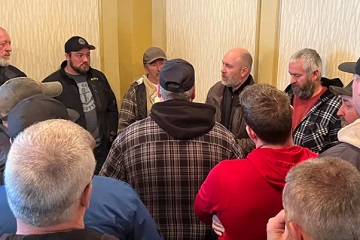
Angry inshore harvesters from fishing area 3L demand changes to allow for quota increases
A week of angry protests by inshore crab harvesters from eastern Newfoundland cooled slightly Friday following the promise by the federal fisheries minister of a review of their concerns, and a meeting on Monday between union and federal fisheries officials. Dozens of harvesters were summoned to a hotel in St. John’s on Friday morning by their union for an update on efforts to modify or rip up a management strategy that harvesters say is restricting their chances of higher quotas, and has the potential to drive many of them out of business as markets shrink following a banner year in 2022. There was talk of once again staging a protest, and at one point fisheries union president Greg Pretty donned his jacket and told protestors to follow him to DFO’s White Hills location. “Let’s go. Let’s get out,” Pretty said. >click to read< 13:51

Protesting Fish Harvesters Interrupt Crab Price Setting Negotiations
The protesters fish in 3L, the area from Cape Freels to the southern Avalon. Instead of being one biomass, DFO has created two biomasses which protesters say leaves the inshore sector with less and the larger offshore boats with more. They accuse the union, the FFAW, of weak representation on the issue. Harvester Keith Boland says they’re upset about the way crab quotas are split. He says they have issued with the precautionary approach being taken and the way in which the department is dividing the biomass into inshore and offshore. “Years ago, there was no ‘inside 25 mile’….the crab moved in and the crab moved out,” He laments. “We’re not getting much science now.” >click to read< 13:22

An open invitation to the public – Event to mark the 30th anniversary of northern cod moratorium
An event to mark the 30th anniversary of the announced shutdown of Newfoundland and Labrador’s most iconic fishery is scheduled for next week, with an open invitation to the public to support and share in the historic milestone. “The impact of the moratorium has had a deep and profound impact on the province’s psyche, culture, and economy,” says Ryan Cleary, one of the organizers of the non-partisan event — Moratorium Story, Northern Cod 30 Years On. “It must be recognized for the good of past and future generations.” The event is scheduled for Thursday, June 30th, 1:30 p.m.-3:30 p.m., in Salon B at the Delta Hotel in downtown St. John’s, the same room where the late John Crosbie, then-federal minister of Fisheries and Oceans, made the announcement on July 2, 1992. >Details, click to read< 14:14
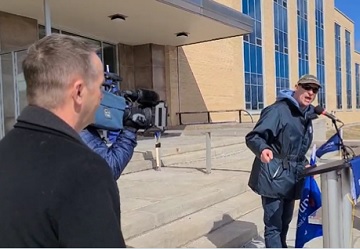
Fisheries Minister Confronted by Protestors at FFAW Rally
Fisheries Minister Derrick Bragg stepped into a lion’s den earlier today as he addressed a crowd gathered at an FFAW protest. The Union organized rallies in St. John’s and Corner Brook to highlight issues around the setting of fish prices. The crowd was loud during the initial speeches, but things took a turn when provincial Fisheries Minister Derrick Bragg took to the microphone. Bragg faced heavy criticism from the vocal crowd on the steps of Confederation Building during his speech. photos, video, >click to read< 16:05
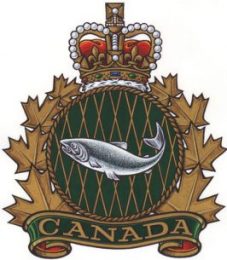
Mismanaged Since 1949! – A primer on fishing failures
Both the federal and municipal elections heighten our interest in whether or not fishery issues will, at last, be tackled in this province. Perhaps those running for elected positions need a primer on how our fishery was decimated over the past 70 years since Canada took over management of this resource following Newfoundland and Labrador’s Confederation entry in 1949. Hopefully, it will counter the current PR that is being disseminated by DFO, which wants Canadians to believe that it is not the department that has failed our province and our communities, but that the destruction has come from climate change, changes in water temperatures and other uncontrollable factors accounting for the demise of our once great fishery resource. There are still many, including myself, who have worked in the industry all these decades and witnessed first-hand and know full well that DFO has mismanaged our fishery since 1949. >click to read<, By Gus Etchegary, St. John’s 13:30
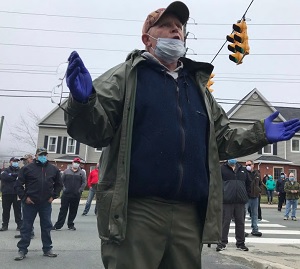
Protesting fish harvesters shout ‘We got no union!’
A protest involving 100 fish harvesters was heading Tuesday to Confederation Building after police urged demonstrators to disperse from the St. John’s headquarters of the Fish, Food & Allied Workers union. Tuesday’s protest is the second in the last several days in which harvesters demanded action on several issues, including crab prices, trip limits and safety concerns related to COVID-19.,, While protestors spilled out onto the street to space themselves out, many in the group said they were staying put to drive home their points. Ronnie Bidgood, a Petty Harbour harvester, he and others were standing up for their livelihoods and wouldn’t be leaving. >click to read< 18:12

FISH-NL schedules Friday protest at Confederation Building in St. John’s
The Federation of Independent Sea Harvesters of Newfoundland and Labrador (FISH-NL) has scheduled a demonstration for 1 p.m. Friday, April 6, on the front steps of Confederation Building in St. John’s. The event is being organized to protest the desperate state of the commercial fisheries in Newfoundland and Labrador, including gross government and industry mismanagement, and the absence of labour rights in the fishery. Ryan Cleary-President of FISH-NL 18:34
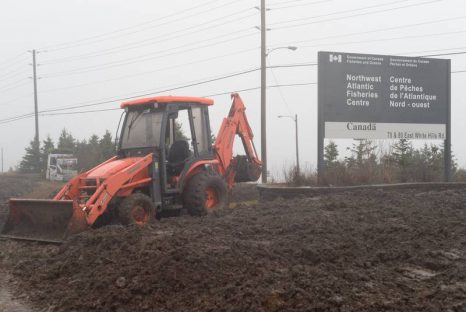
DFO says changes at St. John’s facility a result of disconcerting spring protests
Those measures are a direct result of (Richard) Gillett’s protest, which began on April 13, and an earlier protest on April 7 when a group of protesting fishermen kicked in a window at the building’s main entrance and stormed inside the building. Jan Woodford, regional director of communications with Fisheries and Oceans Canada, Newfoundland and Labrador Region, confirmed Thursday a new security review was conducted as a result of the protests. “Yes, this review was carried out in response to an incident at the Northwest Atlantic Fisheries Centre during which protesters forcibly gained access to the building,” Woodford said. click here to read the story 10:01
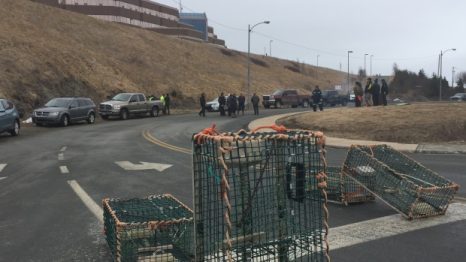
Happening Now! Fishermen block off DFO building in St. John’s for protest
Fishermen have set up camp outside the Department of Fisheries and Oceans office in St. John’s Thursday morning for another protest. The group of 18 protesters set up fishing gear at the entrance to the building around 8 a.m. DFO employees who have not yet come in for work are being asked to stay away until noon. This is the second such protest from the fishermen, who say they’re unhappy about inshore shrimp quota cuts. At the previous protest, the group broke a door and some of them walked into the DFO building. Link 08:14
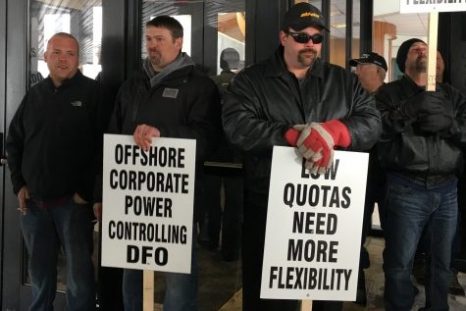
Updated – Protesters smash window, occupy DFO building in St. John’s over shrimp quota cuts
Police were called Friday as members of the Newfoundland and Labrador Independent Fish Harvesters’ Association protested at Fisheries and Oceans Canada headquarters in St. John’s, pushing their way into the building. Around 50 protesters went inside the federal building on White Hills Road, to protest against new quota cuts for the province’s inshore shrimp fishery. CBC has learned that employees are being asked to secure themselves in their offices. By 10 a.m., a window had been broken at the facility, moments after CBC recorded a video of a man kicking the window. RNC officers were on the scene by 10:30 a.m., as protesters entered the cafeteria in the building, and were meeting officials of the department Click here to read the story 11:15
Letter: Fish harvesters deserve better – Jim Radford, St. John’s
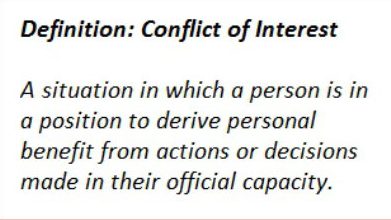 Fish harvesters: are they entrepreneurs, employees or employers? They belong to the Fish, Food and Allied Workers Union (FFAW), which looks to me like an employees union. Now they want to form their own new union; that puzzles me because the title “union” has been captured by governments and organized groups of employees to act in negotiations between employees and employers. Why does it matter if they call FISH-NL a union, or something different? I think it is a matter of focus. Back to the first question, are they entrepreneurs? As a retired entrepreneur, I have always thought that an entrepreneur is a person or entity that has investment at risk for entrepreneurial gain. That is the bedrock of a free enterprise system. Great letter. Read the rest here 11:38
Fish harvesters: are they entrepreneurs, employees or employers? They belong to the Fish, Food and Allied Workers Union (FFAW), which looks to me like an employees union. Now they want to form their own new union; that puzzles me because the title “union” has been captured by governments and organized groups of employees to act in negotiations between employees and employers. Why does it matter if they call FISH-NL a union, or something different? I think it is a matter of focus. Back to the first question, are they entrepreneurs? As a retired entrepreneur, I have always thought that an entrepreneur is a person or entity that has investment at risk for entrepreneurial gain. That is the bedrock of a free enterprise system. Great letter. Read the rest here 11:38
Cod was key to our survival – Earl Snelgrove, St. John’s
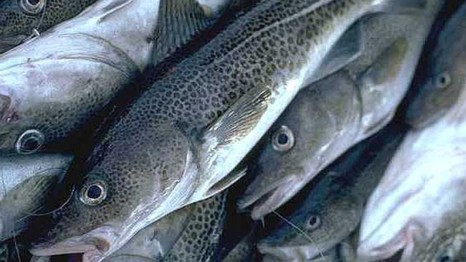 I was born in the small fishing community of Grates Cove, Trinity Bay near Baccalieu Island in the later part of the 1920s and used to go fishing with my father and some of my brothers. My father had three cod traps which he inherited from my grandfather. We set those traps by the shoreline not more than 20 fathoms (about 120 feet) off from the shore. About the time the caplin came to the beaches from the Grand Banks for spawning, anytime from mid-June or early July, we would set our traps, and the cod chasing the caplin would be led into the traps by means of a leader. Read the rest here 09:35
I was born in the small fishing community of Grates Cove, Trinity Bay near Baccalieu Island in the later part of the 1920s and used to go fishing with my father and some of my brothers. My father had three cod traps which he inherited from my grandfather. We set those traps by the shoreline not more than 20 fathoms (about 120 feet) off from the shore. About the time the caplin came to the beaches from the Grand Banks for spawning, anytime from mid-June or early July, we would set our traps, and the cod chasing the caplin would be led into the traps by means of a leader. Read the rest here 09:35

































